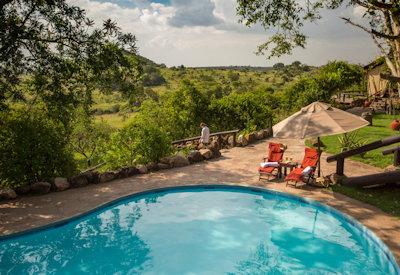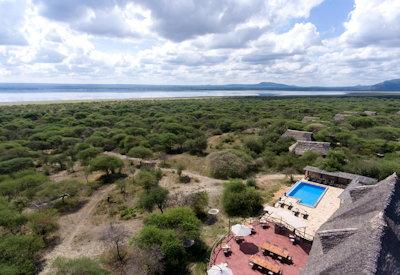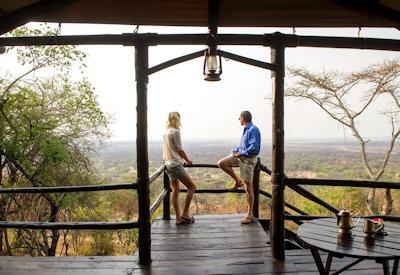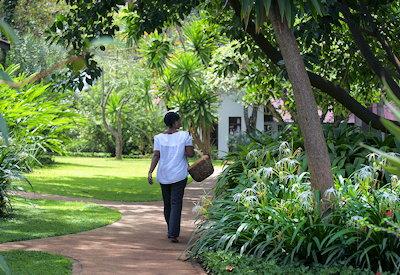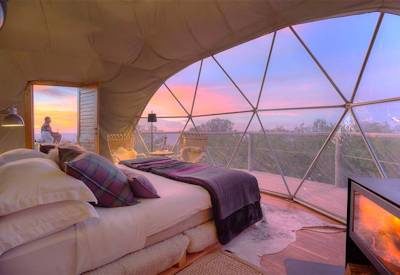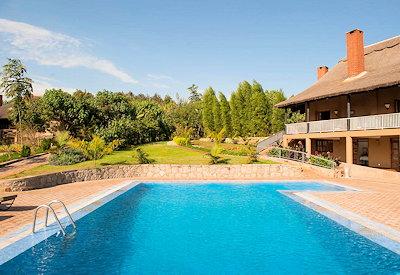The new addition to the sengi family was first spotted in 2005 when Francesco Rovero of the Trento Museum of Natural Sciences in Italy set up motion-sensing cameras in the forests of Tanzania's Eastern Arc Mountains. A photograph appeared of a creature with a long snout that no one could identify. It was only a year later that a team expedition laid traps to catch live specimens of the creature they suspected was a new species. The traps they brought along were not really big enough for this giant among elephant shrews, so the team had to rely on the traditional hunting snares instead.
They finally managed to capture 4 of the animals and could confirm that this was indeed a new species of elephant shrew. The elephant-shrews are mammals of an order called Macroscelidea; from the Greek meaning "long legs". Though they have some resemblance, they are actually not related to the shrew – a small mouse-like animal found in many parts of the world. Scientists now prefer using the African name "sengi" to prevent confusion with shrews.
Sengi forms their own order of mammal and get their common name from their long elephant-like snout which they use to flick up tasty insects. Curiously, genetics has shown that sengi shares a common ancestor (estimated to have lived about 100 million years ago) with golden moles, the aardvark, manatees, dugongs, hyraxes... and their namesake elephants!
Rhynchocyon udzungwensis, or grey-faced sengi, is the first new species of sengi to be discovered in more than a century. It is much larger than the other species, weighing in at 700g and measuring about 30cm in length. It has a distinctive grey colouring on its face and a black lower rump.
There is a lot of pressure on the forests from surrounding villages and the sengi is known to be on the menu of local tribespeople. The creature will probably join the endangered species list but is probably saved from extinction by its remote location in the heart of the mountain forests.
Udzungwa Mountains National Park
This exciting new species discovery was made in the remote Udzungwa Mountains National Park, a 1990 km2 area in south-central Tanzania. Lohomero, its highest peak lies at 2,576 metres above sea level.
The name Udzungwa probably originates from a distortion of the name of one of the tribes living on the slopes of the Mountains, "wadsungwa".
These mountains form part of the Eastern Arc, a mountain chain of isolated mountains running through Tanzania and southern Kenya. They are covered in spectacular forests which receive a lot of rain from the prevailing east wind carrying humid air from the Indian Ocean. The eastern arc is a "World Biodiversity Hotspot" which excites scientists with a large number of plant and animal species endemic to this part of the world.
The surrounding lands have been deforested by the pressure and needs of the people living in inland Tanzania. And so, the mountain forests have become islands in-between the arid heavily populated savannah land. These forest islands are home to over 30% of Tanzania's plant and animal species. The much loved African violet, which graces homes all around the world, originates in these forests.
The region harbours at least 100 species of mammals, birds, amphibians, and other vertebrates found nowhere else on earth, making it one of the densest concentrations of endemic species.
And ... the grey-faced sengi is the latest addition to the list of creatures known to call Udzungwa home.
Serengeti Migration Camp
Migration Camp is an upmarket tented camp, located in absolute isolation among the wide flat rocks and acacia of the Serengeti, above a northern Grumeti River; the camp exudes a decadence reminiscent of old Africa.
For those seeking out the very best safari adventure to witness the wildebeest migration, this Serengeti camp is for you.
Lake Burunge Tented Camp
Lake Burunge Tented Camp is the perfect place to relax in comfort after a day of game drives in Tarangire National Park with views out over the lake and into the distance.
We invite you to be a privileged spectator from this Tarangire luxury camp on the shores of Lake Burunge.
Ngorongoro Serena Safari Lodge
Ngorongoro Serena Safari Lodge is a unique blend of world-class luxury, timeless volcanic splendour and ethnic style, as for the views, from lilac-streaked sunrise to indigo star-studded night, the immeasurably ancient NgorongoroCrater delivers a theatre of vistas.
Ngorongoro Serena Safari Lodge is perfectly positioned on the rim overlooking those famed Ngorongoro crater views.
Kirawira Serena Camp
Kirawira Serena Camp, standing high on the bluff of a bush-cloaked ridge, commanding panoramic views over the endlessly rolling reaches and volcanic reefs of the National Park, is the epitome of colonially-styled safari luxury.
Serengeti National Park and the wildebeest migration are a must view from Kirawira camp.
Plantation Lodge
Plantation lodge's location promises maximum safari enjoyment: a stone's throw from the entrance to the Ngorongoro crater, a short hop from the Tarangire and Lake Manyara national parks, and just a short journey from the Serengeti.
The Highlands Ngorongoro
The Highlands Ngorongoro with 8 domed tented suites redefines that classic Ngorongoro crater experience striking that balance between a wilderness experience and a contemporary luxurious escape.
The Highlands offers an exclusive private safari to one of Africa's most wildlife rich destinations, The Ngorongoro Crater.
Serengeti Pioneer Camp
Serengeti Pioneer Camp is themed after the original safari camps of the 1930's, located in the central Serengeti National Park region within an area called the Moru Kopjes.
An exceptional camp by any stretch of the imagination, perfect for small families and couples alike.
Kitela Lodge
Kitela Lodge with 20 cottages is located on a coffee plantation surrounded by the incredible highlands of the Ngorongoro Conservation Area.
It is from here that guests get to view wildlife, birdlife, culture all whilst staying in a haven of peace and comfort.

